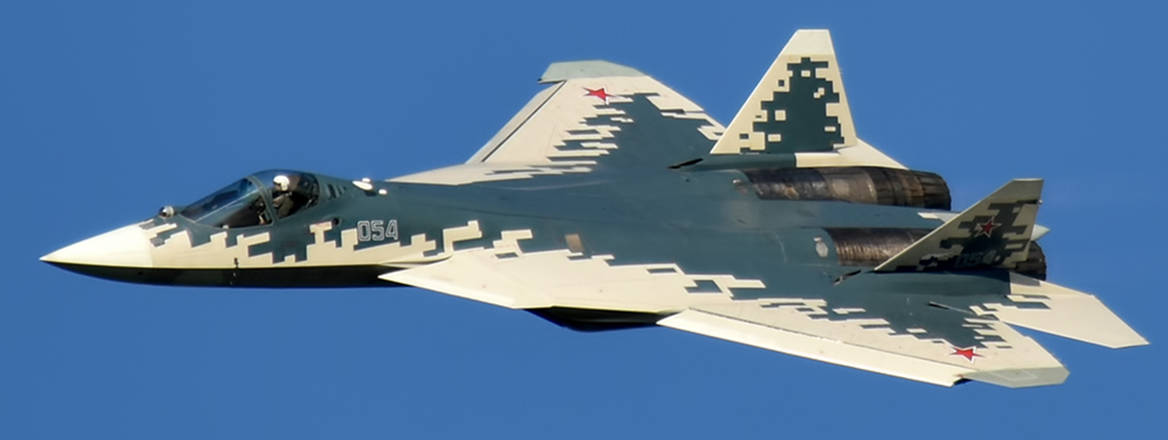RUSI
|
|
Damaged Su-57 Emphasises the Vulnerability of Russian Airbases Near Ukraine
Ukraine’s apparent success in damaging a Su-57 is a substantial blow to Russia’s long-troubled stealth fighter fleet, and another Illustration of Ukraine’s most effective option for countering increasingly effective Russian air attacks on the frontlines.

The Defense Intelligence Directorate of Ukraine (GUR) has released satellite imagery that appears to support its claim to have damaged at least one Russian Sukhoi Su-57 ‘Felon’ fighter aircraft on the ground at the 929th VP Chkalova State Flight Test Centre in Akhtubinsk. Akhtubinsk airfield is located around 370 miles from Ukrainian-held territory, placing it beyond the reach of most of the long-range strike weapons supplied so far by Western countries, but the attack was reportedly carried out by three one-way attack (OWA) drones. Ukraine has developed a wide variety of such drones, which range from small and very slow propellor-powered craft with a very small warhead to adapted jet-powered target and reconnaissance drones that are much larger and faster and carry heavier warheads. It has been using these often fairly cheap and easy-to-produce weapons to carry out a determined harassment campaign deep inside Russia against factories, port facilities, oil refineries and airbases. If, as Russian Telegram channels seem to confirm, a Su-57 has indeed been significantly damaged, this would represent one of the higher-profile successes of such weapons, alongside the destruction of a Russian Tu-22M3 bomber and damage caused to a Tu-95MS bomber.
Impact on Su-57 Operations

CreditDefense Intelligence Directorate of Ukraine
It is unclear how much damage the Su-57 in question has sustained. The satellite photo appears to suggest that two relatively small explosions occurred within around 3–5 metres of the aircraft, which was parked on an outdoor concrete hardstand. Some sort of transparent dust shelter or netting may be covering the aircraft, as there appears to be some sort of lightweight arching structure suspended over it in both photos. This might in fact be anti-drone netting intended to stop a lightweight propellor-powered OWA weapon from hitting the aircraft. If so, it failed, as both warheads appear to have exploded on the ground on either end of the left-hand side of the ‘shelter’ structure, where shrapnel would have been able to damage both the front nose section and the tail section of the aircraft. Shrapnel damage to the rear section might be relatively easy to repair with an engine change and replacement horizontal and vertical stabilisers, but shrapnel damage of any significance to the nose section would be much more serious. It would likely cause damage to the radar array(s), Infra-Red Scan and Track sensor, and cockpit, as well as instruments and electronic systems critical to the functioning of the whole aircraft. However, the Su-57 looks to have avoided a serious fire from the strikes, which would likely have resulted in irreparable damage, so depending on the severity of the shrapnel damage it may well be repaired and returned to service.
Repairs will, however, be expensive and will take additional time compared to similar repairs to less advanced aircraft. The Su-57 has yet to enter full-rate production, since the decision to do so is awaiting the development of the ‘definitive’ Su-57M version, meaning that spare parts are likely to be in limited supply. As such, the Su-57 is still a very rare commodity in the Russian Aerospace Forces (VKS), with only around 15–20 likely to be in frontline service. Former Defence Minister Sergei Shoigu stated in December 2020 that the VKS expected to receive 22 Su-57s by the end of 2024. However, at the start of the invasion of Ukraine, only four series production aircraft had been delivered, as the first crashed and was completely destroyed during its acceptance trials. Around 12 are claimed to have been delivered in 2023, but no deliveries in 2024 had been announced by April 2024 despite multiple announcements of other types, so the total number in service is unclear. It is likely that Su-57 development and production is also being slowed down by Sukhoi needing to focus on maximising output of mature fighters like the Su-30SM2 and Su-35S to replace significant combat losses incurred in the war against Ukraine. International sanctions have also made it far more difficult for Russia to source the Western avionics and micro-electronics that have been essential components of its advanced fighter and attack aircraft cockpits for more than a decade. Thus, even the temporary loss of one Su-57 airframe in this Ukrainian strike likely represents at least a 5% cut in the frontline fleet of Russia’s most advanced fighter aircraft. It is also a significant symbolic blow to an already long-troubled aircraft programme that is a centrepiece of Russian military pride.
Click here for the full press release
Original article link: https://rusi.org/explore-our-research/publications/commentary/damaged-su-57-emphasises-vulnerability-russian-airbases-near-ukraine


